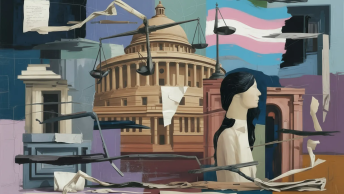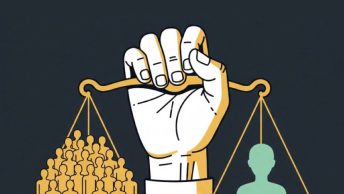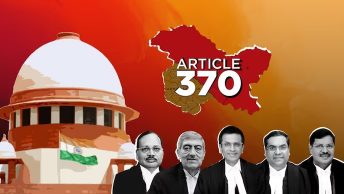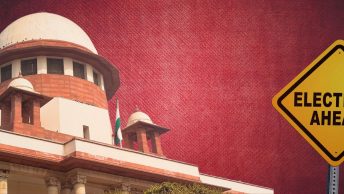In this part, I critique the expansive interpretation of Article 17 undertaken by Chandrachud, J. and argue that he paved the way for a new form of the ‘non-discrimination’ doctrine, lending teeth to the provisions of Article 17 and allowing it to attack a wider set of discriminatory practices that find justification in such notions.
- Expansive Interpretation of Article 17 – A Critique
- Constituent Assembly Debates: Scope for an Expansive Interpretation
During the Assembly Debates, the undefined nature of “untouchability” had come up. While some members favoured a caste-based understanding of the term, none of the members proposed a narrow definition in opposition to an expansive one.
There were references to Article 15(2), and a connection to Article 17 was made. The same can be understood to imply that an interpretation of Article 17 was required in a broader sense. It was argued that Article 15(2)’s prevention of “horizontal discrimination” in access to hotels, shops, public restaurants, etc. was superfluous, because of Article 17, since it already abolished such practices based on caste. But there is another way to look at these Articles – since Article 15(2) already covered caste and religion-based discrimination, a narrow reading of Article 17 would make it redundant. Therefore, the scope of Article 17 becomes wider. It may be taken to include the abolition of “social inequity… social stigma and… social disabilities.”
Another relevant exchange that is worth noting is between Prof. K.T. Shah and Dr. B. R. Ambedkar. Prof Shah decried the lack of a definition clause regarding “untouchability” and cautioned that proceeding without one would make “it open for busybodies and lawyers to make capital out of a Clause like this.” He specifically went on to detail instances of “untouchability” based on the notions of cleanliness and purity that did not find a basis in the caste system and questioned whether the Article would cover them also. Further, in this context, Mr. Naziruddin Ahmad had attempted to move an amendment to the proposed Article which would have restricted Article 17 to only religion and caste. But this was rejected and from this rejection, the reading of a notion against attributing a limited meaning to Article 17 can be inferred.
- Dworkinian Analysis of the Assembly Debates: Article 17 Transcends Caste
American Philosopher Ronald Dworkin, in his Jurisprudence of Richard Nixon,[[i]] introduces the challenge of interpreting what he calls “vague standards” in Constitutional theory. Simply put, the argument concerns constitutional provisions in the Bill of Rights (such as due process, or equality) that may/may not have been drafted keeping a certain context in mind. He argues (a) that these standards have been made ‘vague’ purposefully, to (b) extend the general principle to uncharted situations, instead of having to modify the principle with every subsequent development/modification to the initially conceived position(Dworkin, R. 1997, Chapter V). This principle also works to check rigidity in the realization of law(s), so that any given law is not bound to the circumstances that existed at the time of its drafting.
Consider the arguments in the previous section in light of ‘purposive vague standards.’ It can be inferred, as noted by Chandrachud, J. as well, that there was discord over the (lack thereof) definition of “untouchability” as written in the draft Article. Furthermore, subsequent exchanges do in fact point to a deliberate omission of a definition for the term as well. Secondly, take into account this proposition with the fact that no member actually proposed a narrow definition (for “untouchability”) in opposition to an expansive one. So, it can not only be inferred that “untouchability” was left undefined but also that it was deliberate. Hence “vague standards” find relevance. Dworkin proceeds to mention 2 approaches that may be employed by the courts while interpreting the ‘vague’ sections/laws (Dworkin, R. 1997, Chapter V). These are the ‘strict’ and ‘liberal’ strategies.
The viability of a strategy depends on the response to the propositions: the decision required by (i) a ‘strict’ and faithful adherence to the text/ intention of the drafters, and (ii) the political philosophy taking a strict/narrow view of moral rights possessed by individuals against society? So, Chandrachud, J.’s by beginning the inquiry at the core of Article 17, i.e., the logic of Purity-Pollution, opted for the liberal strategy which in turn treated “untouchability” in Article 17 as a deliberately vague standard, owing to which Article 17 is read to transcend just caste.
Therefore, a principle-based (i.e., ‘Purity-Pollution’) reading of Article 17 as undertaken by Chandrachud J. is not only justified but also warranted. The purity-pollution-based reading of Article 17 allows for this Article to capture the essence of the caste system, and base subsequent inquiries around this logic, expanding the scope of Article 17 to include a wider set of practices. This expansion of Article 17 is in line with the assembly debates as well as the Dworkinian line of arguments. It accounts for those circumstances that may not have been foreseen by the drafters at that time. Take the modern-day example of having separate lifts for workers/maids in apartment complexes, or serving them food in separate utensils. This practice is not necessarily caste-based untouchability, since it is not primarily foregrounded in caste. But this differential treatment is based in the logic of purity-pollution, going to the jobs these people may hold and caste-based connotations that may be attached to particular jobs. While caste is not the immediate cause of the differential treatment here, there is nonetheless an exclusionary effect.
- Widening the Scope of Article 17: The Anti-Exclusion Principle
Gautam Bhatia, while dealing with a similar prospect, put forth the ‘anti-exclusion principle,’ as a measure to restrict religious groups’ autonomy, as to the extent to which the acts of groups have an exclusionary effect on individuals, regarding access to basic possessions, “necessary for a life of material and expressive dignity.” Bhatia propounds the ‘anti-exclusion’ principle out of Sinha C.J.’s dissent in Sardar Syedna. He bases the conception of Articles 15(2) and 17 in this principle. His ideas find relevance in the discussion around expanding the scope of Article 17. Essentially, the principle of anti-discrimination, as propounded under Article 15(2), can be given an expanded meaning, especially in the context of religious practices. It allows for an emphasis on the exclusionary effect of the religious practice rather than its content. This further adds to the Essential Religious Practices (ERP) debate. In Sabarimala, the decision is borne out of the finding that the Ayapanas did not constitute a ‘religious denomination.’ Consequently, the ERP test was applied, and subsequently, the test of ERP was applied and this application shifted the focus away from the Article 17 argument and the exclusionary effect of practices.
- Expansive Interpretation of Article 17: Limitations & Concluding Remarks
Starting with the very framing of the right, it is not followed by any exceptions. This implies its absolute nature. A possible implication of expanding it would be the inapplicability of reasonable restrictions to it. This can conflict with the practice of some “permissible” forms of “untouchability” (may be temporary), as flagged by Shah during the Debates. He had provided such examples and questioned the applicability of Article 17 thereon. He had specifically referred to the often “untouchable” nature of women during menstruation. He further gave examples of religious practices and funeral rites that regard people as “untouchables”.
Moreover, the judiciary would not be able to read reasonable restrictions into Article 17 following a harmonious interpretation of the Constitution, since it would allow for the practice of “untouchability” to subsist in some form or the other. A solution to such a predicament could be the determination of the effect of the impugned practice on a case-to-case basis, by terming the question as one of fact. Additionally, perhaps a constitutional amendment could be brought in to stabilize the application of this Article.
[[i]] Ronald Dworkin, The Jurisprudence of Richard Nixon (1972 N.Y. Rev. Books) reprinted in
Ronald Dworkin “Constitutional Cases” Taking Rights Seriously, Harvard University Press, Cambridge, Mass 1997. 131.
Archit Sinha is a 2nd-year student at the National School of India University, Bangalore (B.A. LL.B).
This article has been co-edited and coordinated by Sukrut Khandekar, Anushree Verma & Suhani Paruvelly from our student editorial team.
Image Credit: Hanna Barczyk. You can find their illustrations here.







[…] Posted byAvani Vijay […]
genu5h
Your point of view caught my eye and was very interesting. Thanks. I have a question for you.
Can you be more specific about the content of your article? After reading it, I still have some doubts. Hope you can help me.
Your point of view caught my eye and was very interesting. Thanks. I have a question for you.